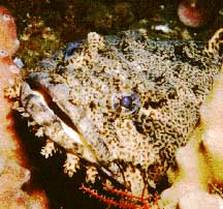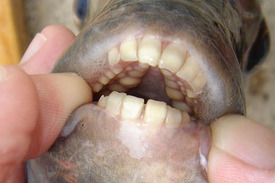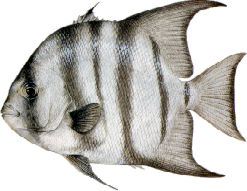
We headed for the Lynnhaven ramp on a Sunday morning in mid September. The weather was perfect, no rain and very little wind forecast. Surprisingly there wasn’t a lot of activity around the ramp. We weren’t sure if that was a good sign or not. No waiting in line to launch the boat and plenty of parking places, but was the flounder run over?
After launching the boat we tried throwing cast nets inside Lynnhaven inlet for bait. Usually we catch finger mullet and bunker (a small specie of shad). We didn’t catch any bait, another bad sign? Just outside of the inlet we decided to drop a couple of bottom rigs with small hooks to catch some small croakers and spots for flounder bait. We caught plenty of the small fish. We kept most of them in the live well, the rest we cut up as bait.
Unfortunately for us the flounder run was indeed over. We caught several that were under the legal limit. What was running in great numbers were oyster toadfish. We managed to catch about 30 of the ugly creatures. If there is an uglier fish that swims I don’t know about it. By early afternoon we decided we had enough. We reeled in our lines and turned the boat towards the ramp. We were cruising along the Bay Bridge pilings when one of our members yelled, “Stop the boat”. He spotted 4 large cobia swimming around a pilling. My son in law quickly climbed up the tower on top of the boat and flipped a large gaudy jig next to the piling. One of the fish turned and swirled on the jig, but did not take it. The son in law yelled down, “That fish’s mouth was as big as your head, it was at least 70 lbs.”. Then he asked one of us to send up a rod baited with a small spot. He flipped the live spot next to the piling and one of the cobia took the bait. He passed the rod down to me and it was all I could do to hold on, line was flying off the reel. My son in law yelled to the boat driver, “Get the boat in open water”. About 30 seconds later and a few cranks on the reel the line went slack. Most of you know that is a real sick feeling. We returned to the ramp with mixed feelings. Dejected because we lost the big fish, but excited because the fish were there. My son in law begged me to stay another day and go search for the cobia. Too bad we had to come back here for an appointment.
Good luck and keep the lines tight, Paul
Image Credit: http://en.wikipedia.org/wiki/File:OysterToadfish.jpeg




 RSS Feed
RSS Feed